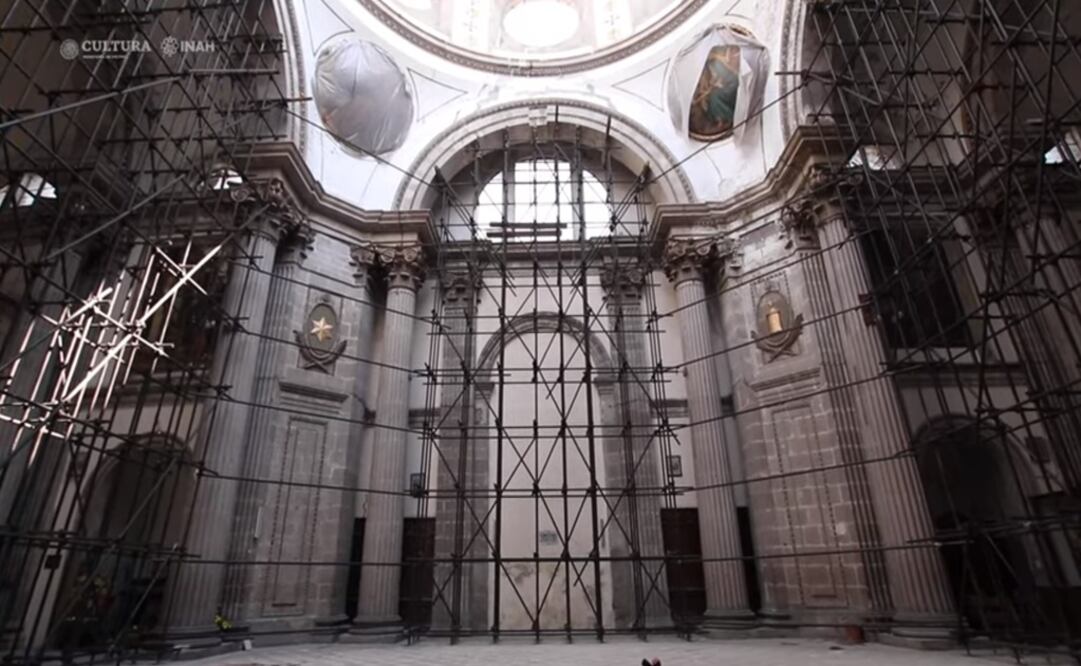Más Información

Prevén fin de semana con frío, viento y lluvias en gran parte del país por frente frío 24; el número 25 llegará la madrugada del lunes

Cae Jesús Caballero, excolaborador de Genaro García Luna; es acusado de lavado de dinero, delincuencia organizada y peculado

José Ramón López Beltrán no tiene que rendir cuentas a nadie, defiende Noroña; heredero de AMLO es un “buen hombre”, asegura

Cajetilla de cigarros costará hasta 106 pesos en 2026 por ajuste del IEPS; aumento aplicará a partir de enero
Two years from the earthquakes of September 7 and 19, 2017 , the reconstruction of cultural heritage has a progress of 42% in the recovery of 2,340 buildings that had some level of damage in 11 states of the country. A total of 990 buildings have been repaired , and there are enough resources to attend the other 1,350 damaged buildings .
Through a release, Mexico’s National Anthropology and History Institute (INAH) informed that, in addition to the 990 finished buildings, there are 565 actions or properties in process of restoration, and preliminary studies, as well as the elaboration of intervention projects, are being carried out for other 785 .

From the finished buildings, 325 correspond to Puebla , 217 to the State of Mexico , 118 to Morelos , 91 to Tlaxcala, 79 to Oaxaca, 58 to Guerrero, 47 to Chiapas, 26 to Tabasco, 14 to Veracruz, eight to Mexico City, and seven to Hidalgo.
Regarding archeological zone s, out of the 42 affected by the earthquakes in September 2017, 25 have been attended: four in Chiapas , four in Guerrero , 4 in the State of Mexico , 9 in Oaxaca , two in Puebla , one in Guerrero , and two in Tabasco .
Meanwhile, another nine are being attended (one in Chiapas, five in Morelos, and three in Oaxaca) , and four more are in studies for their subsequent attention (one in the State of Mexico, one in Guerrero, and two in Hidalgo.)
Regarding real estate, they informed that they have intervened approximately 1,600 out of the 15,000 movable assets and furniture associated with damaged real estate.

One of the flagship restorations performed at the Polychromed Sculpture Workshop of the CNCPC of the INAH , is the one of the polychromed sculpture of Santiago Apostle , from Izúcar de Matamoros, Puebla , a piece from the 16th century that suffered great damage after the dome of the parish fell on top of it. The progress in its restoration is relevant.
Another outstanding example is the recovery of three canvases and diverse fragments of the altarpiece of the Santa María de la Asunción Chapel , in Ocuilán , and one of the St. Peter and St. Paul Apostle Temple, in Ecatzingo, State of Mexico.
According to the INAH, they already have all the financial system to continue and conclude the attention to the missing damaged buildings, money from the insurance hired by the institution, by the Natural Disasters Fund (Fonden) or by third parties, such as foundations (Slim, Harp Helú, and Mary Street Jenkins among them), organizations, business groups, and even the own communities.
Likewise, some governments are collaborating in solidarity with the recovery of damaged cultural heritage, such as Hungary, Italy, Spain, and the U.S. embassy in Mexico .

mp
Noticias según tus intereses
[Publicidad]
[Publicidad]













